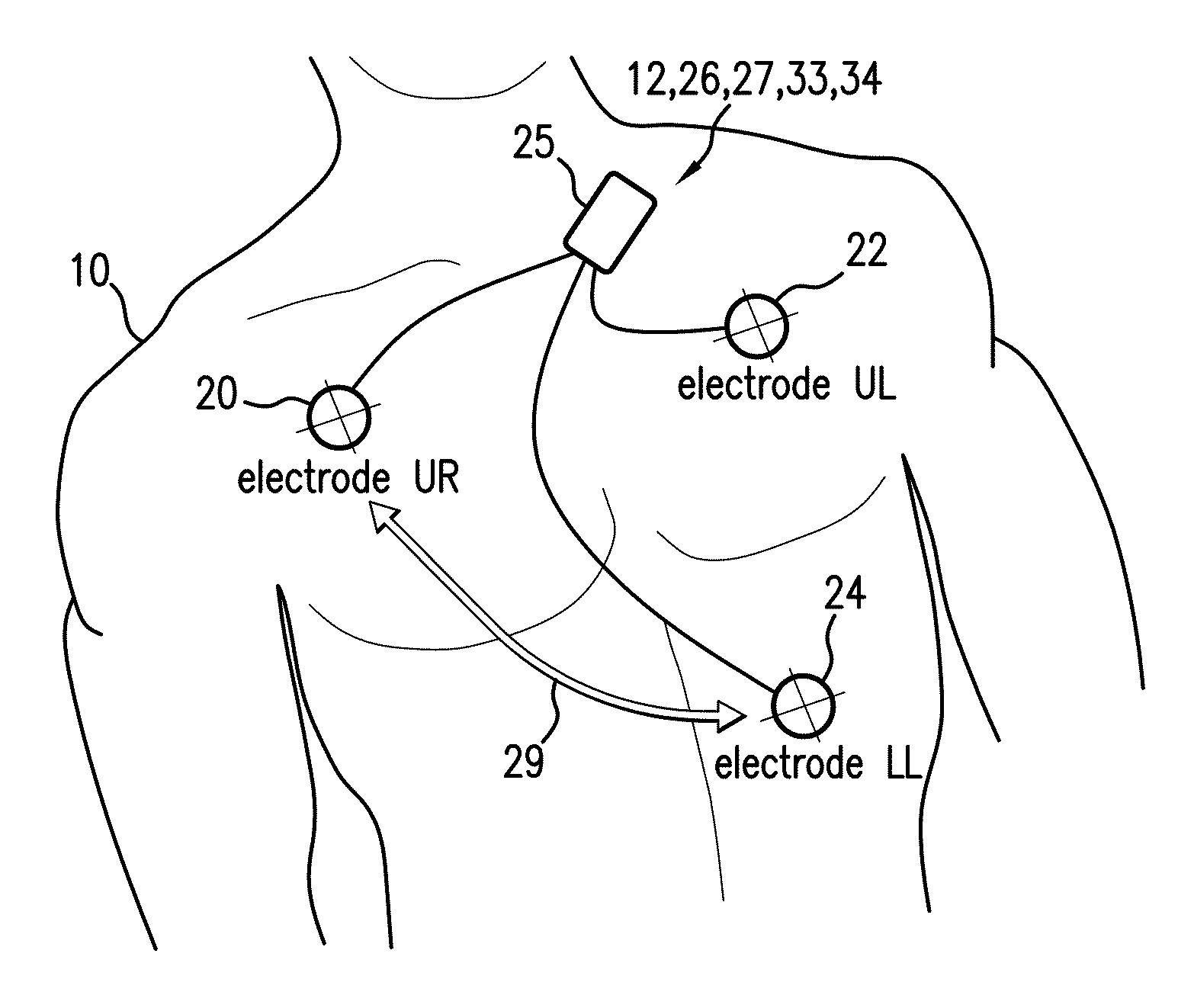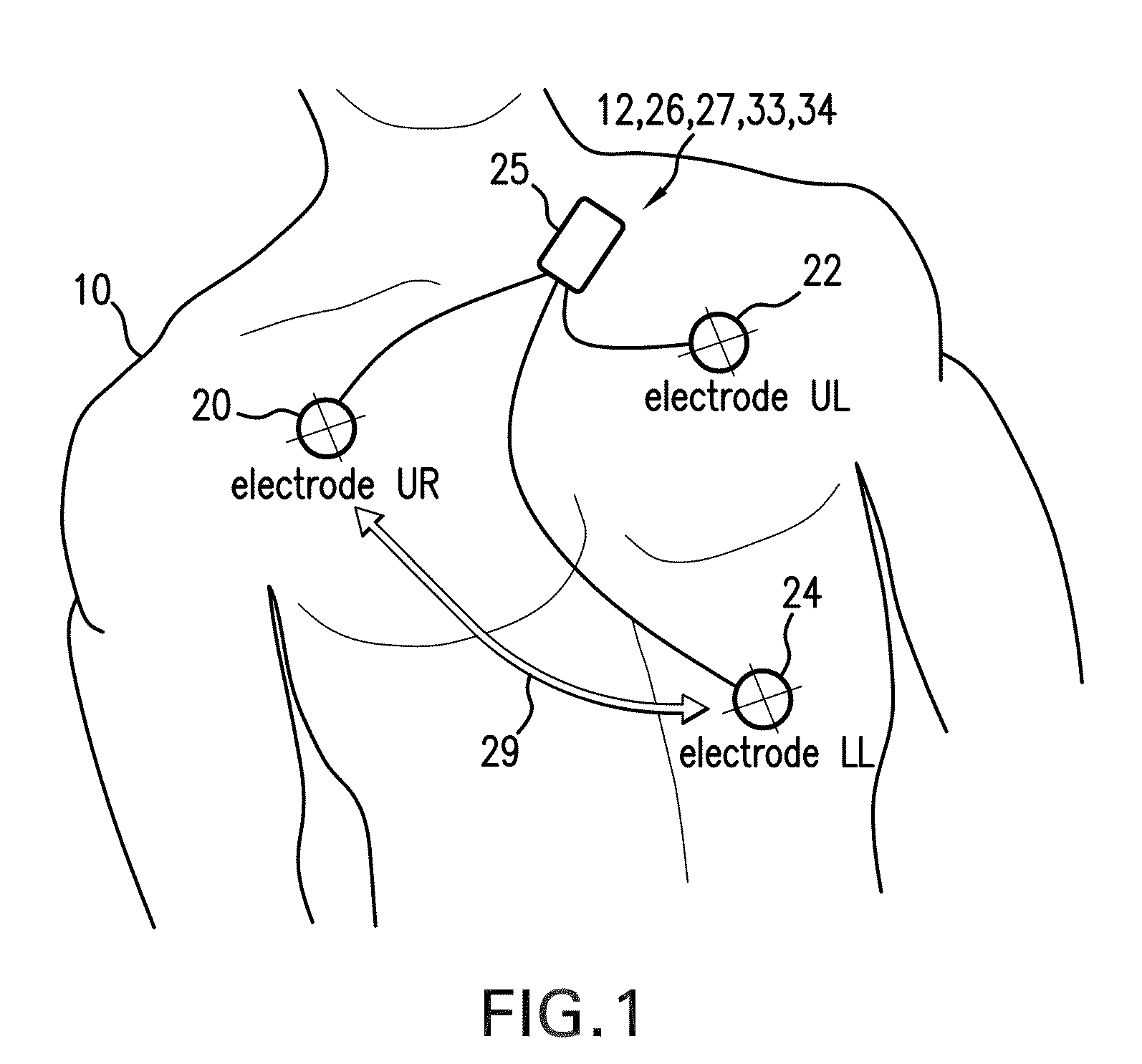Body-worn monitor for measuring respiratory rate
a technology of respiratory rate and body, applied in the field of medical devices for monitoring vital signs, to achieve the effect of reducing false alarms, accurate rr measurement, and improving true positive alarms
- Summary
- Abstract
- Description
- Claims
- Application Information
AI Technical Summary
Benefits of technology
Problems solved by technology
Method used
Image
Examples
Embodiment Construction
Sensor Configuration
[0070]Referring to FIGS. 1 and 2, a sensor module 25 featuring an IP circuit 27 and accelerometer 12 is mounted on the chest of a patient 10 to simultaneously measure IP and ACC waveforms. A multi-component algorithm, featuring specific algorithms based on simple peak counting, FFT analysis, and adaptive filters processes these waveforms to accurately measure RR even when the patient 10 is moving. During a measurement, both the IP 27 and an ECG circuit 26 within the sensor module connect to a trio of electrodes 20, 22, 24 typically positioned on the patient's torso in an Einthoven's triangle configuration. Each electrode 20, 22, 24 measures a unique analog signal that passes through a shielded cable to the ECG circuit 26. This component typically includes a differential amplifier and a series of analog filters with passbands that pass the high and low-frequency components that contribute to the ECG waveform, but filter out components associated with electrical an...
PUM
 Login to View More
Login to View More Abstract
Description
Claims
Application Information
 Login to View More
Login to View More - R&D
- Intellectual Property
- Life Sciences
- Materials
- Tech Scout
- Unparalleled Data Quality
- Higher Quality Content
- 60% Fewer Hallucinations
Browse by: Latest US Patents, China's latest patents, Technical Efficacy Thesaurus, Application Domain, Technology Topic, Popular Technical Reports.
© 2025 PatSnap. All rights reserved.Legal|Privacy policy|Modern Slavery Act Transparency Statement|Sitemap|About US| Contact US: help@patsnap.com



